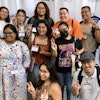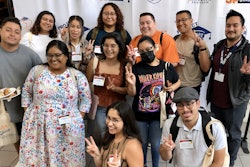In academic and student activist circles, many have adopted the term “Latinx” as a gender-neutral and gender non-binary inclusive replacement for Latino or Latina. The word — which made its debut in Merriam-Webster’s dictionary in 2018 — is increasingly popular among scholars, with universities like Harvard, Yale and others offering Latinx studies programs.
But only 3% of U.S. Hispanics actually use the term, according to a Pew Research Center study in August. And that’s only out of those who had heard the term Latinx used at all. Less than a quarter of people who identified as Hispanic or Latino were familiar with the term.
For Latino and Latina scholars, the discrepancy speaks to deeper questions about how their communities are reckoning with their own internal diversity in the United States.
Dr. Luis Urrieta Jr. is used to hearing the word Latinx. He’s the Suzanne B. & John L. Adams Professor of Education and associate chair of curriculum and instruction at the University of Texas at Austin. In fact, he recently re-titled a course “Critical Issues in U.S. Latinx Education.”
He thinks the non-gendered term isn’t widely used across the country in part because it “creates discomfort.”
For one thing, it’s a form of “translanguaging.” It “breaks the rules” of both English and Spanish and encompasses elements of both, he says. But the term also acknowledges and makes a point to emphasize the Hispanic LGBTQ community, intersectional identities that have been historically marginalized.
Latinx “incorporates this more expansive view of gender and more inclusive form of sexual identification that some decades ago was taboo to even talk about,” he says. “It’s challenging. It disrupts. It’s a crossroads, a nebulous space. And I think part of the challenge for the community is kind of dealing with its own self. It’s pushing the community to really in some ways ask, who are we? Who’s included?”















